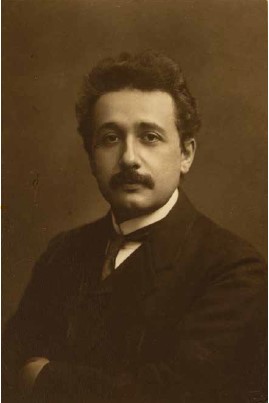
What did Albert Einstein mean by this?
Einstein – synonymous with genius, innovation, and scientific revolution – uttered many profound statements throughout his lifetime. “Imagination is more important than knowledge” is a particularly influential and frequently cited quotation.
Einstein’s statement places imagination at the core of intellectual and scientific discovery, valuing it above knowledge. This perspective doesn’t undermine the importance of knowledge. Instead, it emphasizes the importance of imagination as a precursor to innovation and understanding. Knowledge represents the collection of facts and principles known to a person or society; it is a boundary of current experience. Imagination, on the other hand, represents the ability to transcend those boundaries, to think beyond the known, and to envision what has not yet been discovered or created.
Einstein expressed his conviction about imagination in other ways as well, such as:
“Logic will get you from A to B. Imagination will take you everywhere.”
“The true sign of intelligence is not knowledge but imagination.”
These assertions underscore Einstein’s belief in the power of imagination as the driving force behind scientific breakthroughs and intellectual expansion. His life is a testament to the power of imagination.
In 1905, known as Einstein’s Annus Mirabilis, or Miracle Year, he published four groundbreaking papers while working as a patent clerk, far removed from the academic establishment. These papers on the photoelectric effect, Brownian motion, special relativity, and the equivalence of mass and energy (E=mc²) revolutionized physics. What’s remarkable is that these discoveries were largely conceptual, born out of thought experiments. Einstein’s imaginative prowess allowed him to visualize complex problems and conceive solutions that would fundamentally change our understanding of the universe.
Einstein’s use of thought experiments is perhaps the most vivid illustration of his belief in the supremacy of imagination. One of the most famous of these is the “chasing a beam of light” thought experiment, which led to the development of the special theory of relativity. In his teens, Einstein imagined what a light beam would look like if he could travel alongside it. This imaginative leap laid the groundwork for his theories on time dilation and the relativity of simultaneity, concepts far beyond his time’s scientific knowledge.
Another profound example of Einstein’s imaginative genius is his creation of the general theory of relativity, which proposed that gravity is the warping of spacetime by mass and energy. This theory, which reshaped our understanding of the universe’s structure and the nature of gravity, was conceived not only through mathematical brilliance but also with the assistance of thought experiments. The famous thought experiment of an observer in free fall feeling weightless helped Einstein formulate the principle of equivalence between gravity and acceleration, a cornerstone of general relativity.
Einstein’s valuing imagination over knowledge has implications beyond theoretical physics. It speaks to the importance of creative thinking and innovation in all fields of human endeavor. It emphasizes the need to nurture curiosity and creative thinking in education rather than focusing solely on accumulating facts. It also highlights the power of thinking innovatively and envisioning solutions in problem-solving that transcend the current state of knowledge and conventional thought.
Albert Einstein’s statement that “Imagination is more important than knowledge” is a powerful reminder of the human mind’s potential. It champions the creative spirit as the engine of progress and discovery, using curiosity and imagination as pathways to more profound understanding, reaching beyond the horizon of our current knowledge.
___________________
Note: The images printed in EINSTEIN: The Man and His Mind are exact copies of the original photos. The images are printed on photographic quality paper that is spot varnished. This technique reproduces the originals as accurately as possible. The exceptional quality control adhered to by the publisher is an essential feature of the book. It permits the reader to share the experience as if viewing the actual photographs in this private collection.
Learn more about EINSTEIN: The Man And His Mind.
